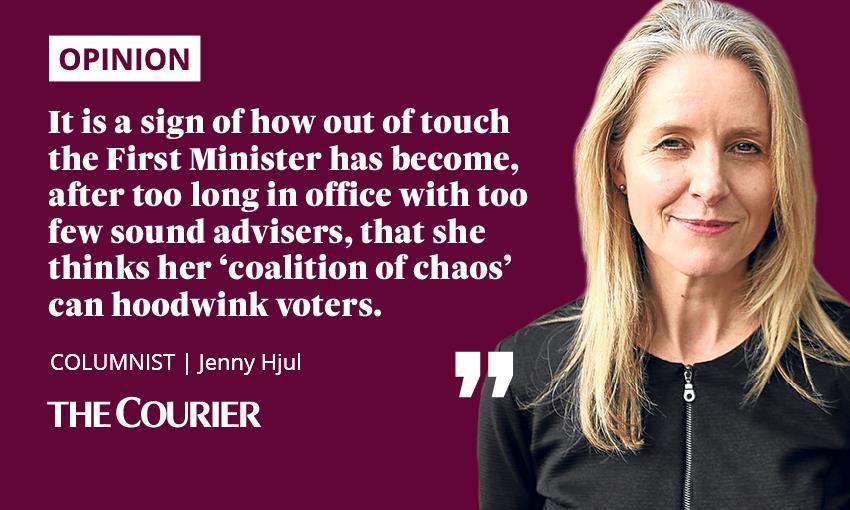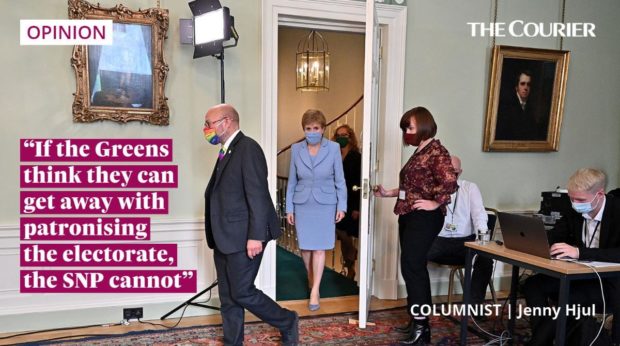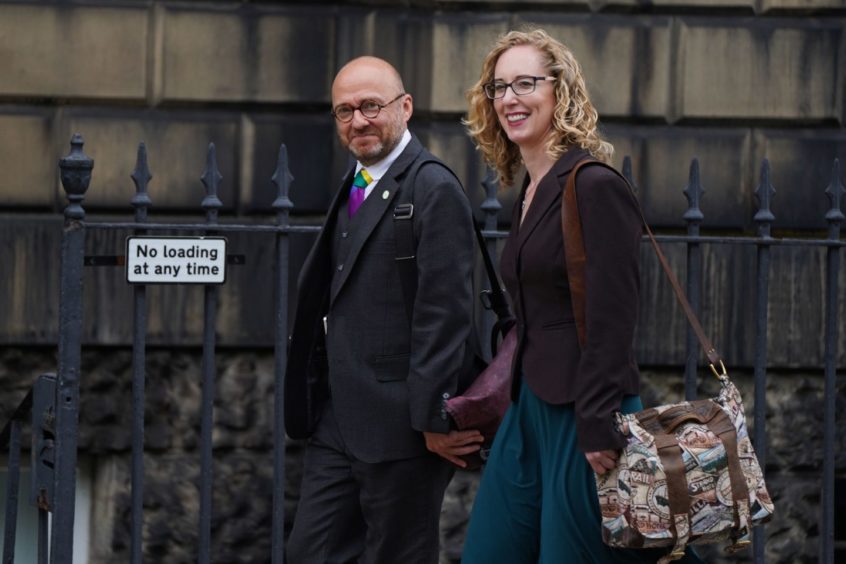The first fall-out from the Scottish government’s damaging deal with the Greens came two days after the pro-independence pact was unveiled.
Aberdeenshire councillor Geva Blackett announced on Monday she was resigning from the SNP over the cooperation agreement, which will, she believes, threaten rural jobs and devastate the communities she represents.
“Government policy is being made with little or no understanding of the challenges remote rural communities face,” she said.
It is not surprising that internal opposition to the alliance emanated initially from the north-east, which is likely to be hit hardest if the Greens are successful in pushing through their anti-growth agenda.
Some 100,000 jobs in the oil and gas industry are top of the list of Green targets in a strategy that has somehow earned them a place in the corridors of power.

They are there, of course, to deliver the numbers the SNP failed to win in May’s election and provide a mandate, or so Nicola Sturgeon claims, for a second independence referendum.
But it is a sign of how out of touch the First Minister has become, after too long in office with too few sound advisers, that she thinks her “coalition of chaos” can hoodwink voters.
Greens and SNP diverge on roads policy
The SNP’s reneging on promises – not just those made in their May manifesto but going back years – has already sparked tensions within her own ranks, with a row brewing over road upgrades.
Green co-leader Patrick Harvie said the deal with the SNP would see an end to new major road projects, with investment instead on “safe routes to ensure everyone is able to walk, wheel and cycle safely in cities, towns and villages across Scotland”.
“The Scottish Greens would take the lead on transforming Scotland’s transport network,” he said.
His triumphalism was short lived, however, after the SNP’s Westminster leader, Ian Blackford, suggested on Monday that plans to fully dual the A96, which runs between Inverness and Aberdeen, would still go ahead.
The MP for Ross, Skye and Lochaber said safety would be key to the A96 and A9 dualling, both long-time pledges of the Nationalists, championed by their candidates in successive Holyrood campaigns.
But within hours of his comments, the Greens were again defending their deal, insisting that any A96 improvements would be “subject to a review of the impact this project would have on the climate”.
Harvie even lamented the good old days of the lockdown when more people took to their bikes on car-free roads.
Blackford’s constituents tend to inhabit remote parts of Scotland where walking or even wheeling to work is out of the question.
Not only are the distances often significant but the weather can take a turn for the worse, particularly in winter.
Greens freed from constituents’ concerns
None of the seven Scottish Green MSPs have to worry about constituents’ best interests because they were all elected on the regional list system, squeezing in on second preference votes.
But now that they are in a position to influence government decisions, their ignorance of how ordinary people live could be regarded more like contempt.
Lorna Slater, the other Green co-leader, admitted during the election that she didn’t know where Scotland’s salmon farms were based.
As this is one of the sectors her party wants to eliminate, largely because of where it is located, her lack of insight is an insult to the people whose livelihoods it supports.
If the Greens – two of whom are about to be made ministers under the terms of the coalition – think they can get away with patronising the electorate, the SNP cannot.
SNP voters may be less forgiving
Sturgeon may be confident her party will embrace her new Green ideals but such “madcap” policies will end up backfiring, warned former Nationalist health minister, Alex Neil.
Neil, who stood down as an MSP in May, said policies that voters think are “damaging to their interest” would result in both the SNP and the independence movement losing ground.
In his former constituency of Airdrie and Shotts, he said, there would be a voter backlash if upgrades to the A77 trunk road were shelved.
There must be many Scots, whatever their opinion on constitutional change, who agree that the SNP’s sell-out to the Greens on Scotland’s energy and transport is a betrayal.
How sympathetic will they be, too, to the new political partners’ commitment to introduce a gender reform bill in the first year of this parliamentary session?
“the most dispiriting part of all this…is that neither the politicians nor the activists who have made trans rights an all-enveloping priority are prepared either to discuss this civilly or to refrain from chucking around instant judgements on “transphobia” https://t.co/i3fBBH8c3R
— Joanna Cherry KC (@joannaccherry) August 15, 2021
This radical legislation, which would make it easier for people to self-identify as another gender, has divided the SNP, with leading female politicians arguing that it threatens women’s rights.
As Scotland tries to recover from the consequences of the pandemic, a focus on pet Green projects at the expense of bread and butter industry and infrastructure will soon wear thin.
Sturgeon in her heyday would have appreciated that but, like her new colleagues, she has lost the plot.











